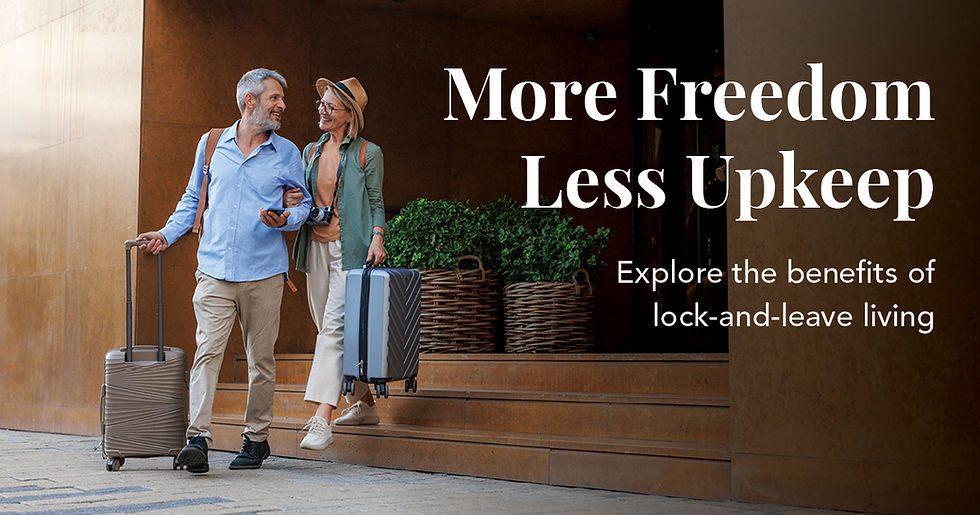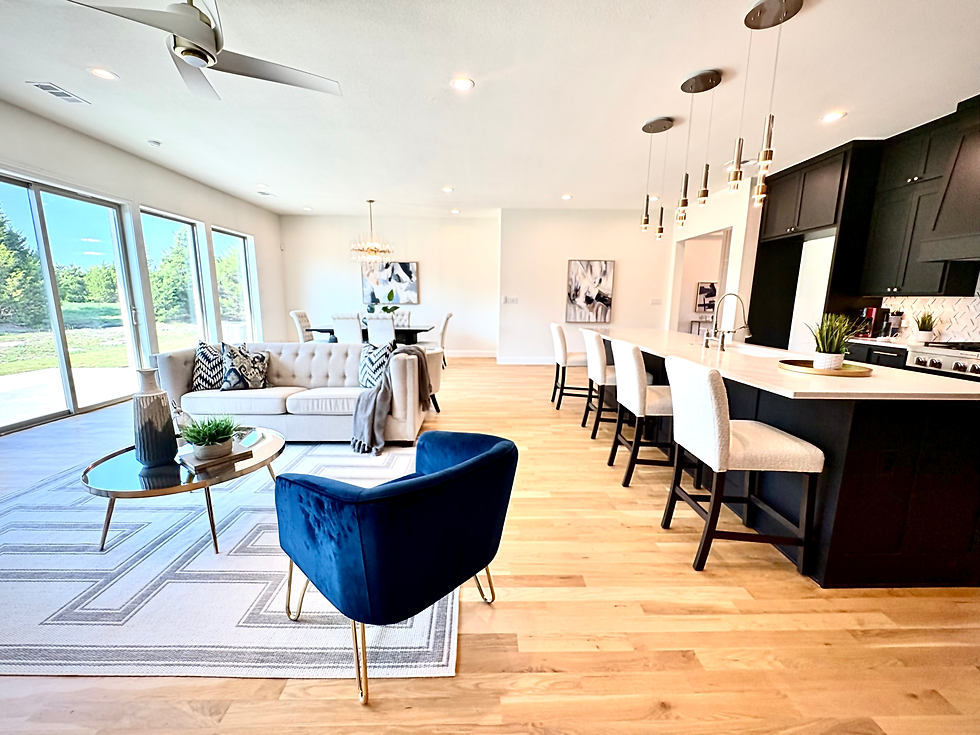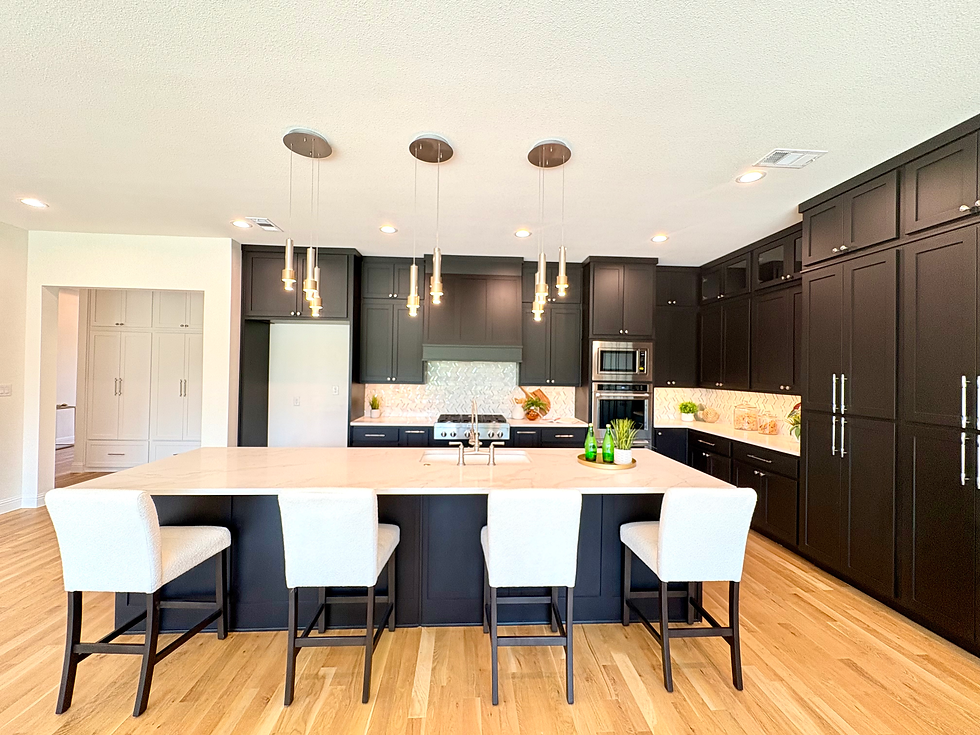MORE FREEDOM, LESS UPKEEP
- Kim Woodul

- Sep 25
- 3 min read
What if homeownership came with less work? Lock-and-leave living is the low-maintenance trend taking Texas by storm.

If you’ve heard “lock-and-leave” or “lock-and-go” lately, you’re probably wondering what the fuss is. At its core, a lock-and-leave lifestyle refers to owning a home that minimizes upkeep and gives you the freedom to leave without worrying about maintenance or security. It’s an appealing option for anyone wanting more freedom and less responsibility tied to homeownership.
Who benefits most from lock-and-leave living?
Lock-and-leave isn’t just for retirees. In fact, it’s becoming especially relevant in the Dallas-Fort Worth (DFW) area thanks to shifting lifestyles and corporate growth.

BUSINESS PROFESSIONALS
Why Lock-and-Leave Appeals
Flexibility
Less time wasted on home chores and maintenance
Security while away
Why North and East Texas?
DFW has become the top U.S. metro for corporate headquarters relocations from 2018-2024, with 100 companies moving in during that period. Companies like KFC (Yum! Brands) are moving their headquarters to places like Plano, further increasing demand for housing that meets flexible, low-maintenance living.
EMPTY NESTERS & RETIREES
Why Lock-and-Leave Appeals
Downsizing
Freedom to travel
Don’t want labor-intensive yard work or a large mortgage
Lower maintenance expenses
Why North and East Texas?
Communities geared for 55+ or “active-adult” living around McKinney, Little Elm, Keller, etc. are offering gated, lock-and-leave style homes.
YOUNG PROFESSIONALS
Why Lock-and-Leave Appeals
They may travel, or split time between home and office
Want lower cost, less time wasted
Drawn to urban or semi-urban living where maintenance is handled
Why North and East Texas?
As major companies relocate to DFW (Goldman Sachs, Bank of America, etc.), more professionals are choosing to live closer in condos or townhomes that allow them to lock up and focus on work or life.

What type of homes work for lock-and-leave?
Here are the types of homes to look for and why they fit the lock-and-leave lifestyle:
Condos: Minimal yard, exterior maintenance handled, built-in security, amenities (pool, gym, etc.)
Townhomes: Shared walls, smaller footprint, HOAs often cover exterior upkeep
Planned communities & gated neighborhoods: Even with single-family homes, if the HOA handles lawn, landscaping, external maintenance, community amenities, then maintenance burden drops sharply
55+ Active Adult Communities: Homes built with right sizing, ease of care, and amenities focused around lifestyle rather than large lot sizes

Pros & Cons of lock-and-leave living
While lock-and-leave offers many benefits, there are trade-offs and common misconceptions. Addressing these helps potential buyers make informed decisions.
Pros:
Time saved (less yard work, fewer maintenance chores)
Flexibility (travel more, relocate more easily, hybrid work)
Potential cost savings over time (less spending on external maintenance, landscaping, oversight)
Security and peace of mind when away
Cons:
HOA / condo fees: these often cover much of the maintenance, but those fees are recurring and can rise; you’ll want to read what the HOA covers and its financial health
Less land / smaller lots: might mean less garden space, less outdoor privacy depending on style
Possible restrictions on exterior modifications (due to HOA rules)
Sometimes higher per-sq.-ft. cost for certain finishes or amenities
Myths:
Myth: Lock-and-leave means giving up control of your home.
Fact: You still own it, can personalize interiors, etc. Exterior control may be limited.
Myth: It’s only for retirees.
Fact: Many younger people, families, and corporate professionals want this lifestyle.

Find a home that fits your now
At Ebby Halliday, we believe home should fit your lifestyle. If you’re considering a lock-and-leave home in North and East Texas, let us help you explore the best options.






Comments